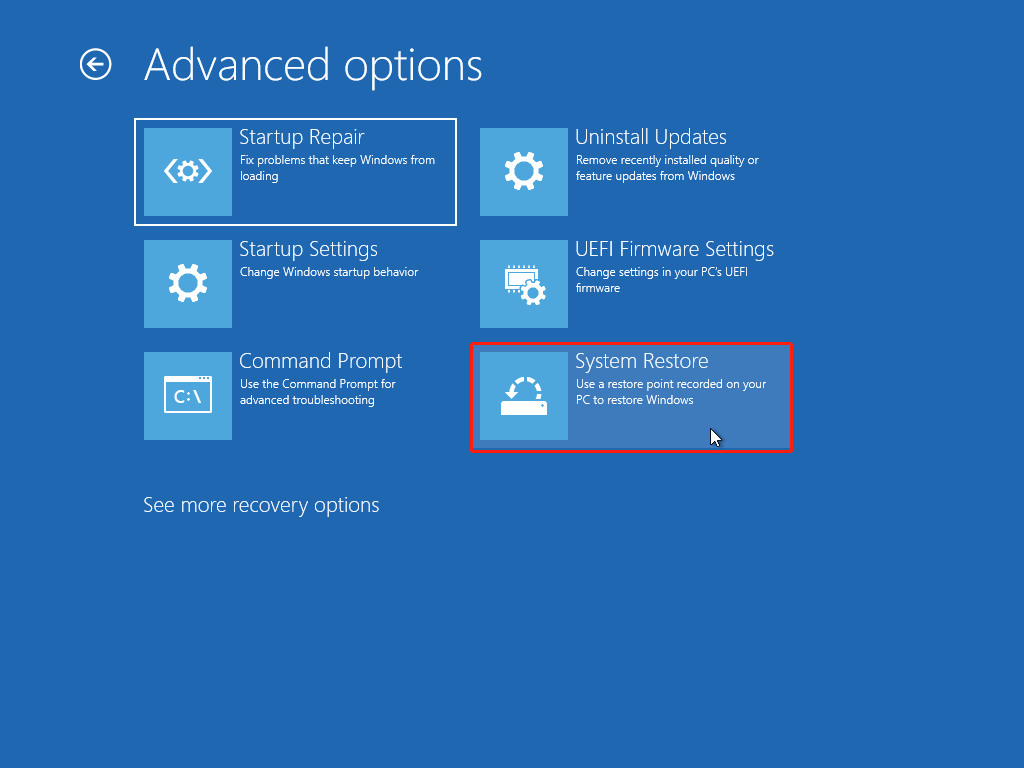- My Forums
- Tiger Rant
- LSU Recruiting
- SEC Rant
- Saints Talk
- Pelicans Talk
- More Sports Board
- Coaching Changes
- Fantasy Sports
- Golf Board
- Soccer Board
- O-T Lounge
- Tech Board
- Home/Garden Board
- Outdoor Board
- Health/Fitness Board
- Movie/TV Board
- Book Board
- Music Board
- Political Talk
- Money Talk
- Fark Board
- Gaming Board
- Travel Board
- Food/Drink Board
- Ticket Exchange
- TD Help Board
Customize My Forums- View All Forums
- Show Left Links
- Topic Sort Options
- Trending Topics
- Recent Topics
- Active Topics
Started By
Message
New PC build problem Crashing to BSOD –“critical_process_died.“ [FIXED]
Posted on 1/14/25 at 8:08 am
Posted on 1/14/25 at 8:08 am
I recently completed my first PC bill, primarily for the occasional gaming and workflow stuff, and put it all together about 2 to 3 weeks ago. After a little bit of tweaking and updating a drivers, I got it working smoothly, although I really wish I gotten a bigger case.
Of course, suddenly three days ago when I turned the computer on in the morning, it immediately went from the basis power on screen directly to the blue screen of death. It’s quickly said that it was “automatic repair“ mode, but this only lasted about one second. It didn’t brought me to an error code screen for a few seconds.The error code that it showed was “critical_process_died“.
It immediately brought me to a screen with the choice to either restarts, saying that it may fix the issue, or advanced options. I’ve gone through every single advanced option feature, and troubleshooting option that has been available with nothing successful so far. I’ve googled in YouTube all the tutorials to fix this issue and tried them all with no success.
Here is the options/troubleshooting screen that I’m referring to:

Below is a rough list of everything I’ve tried so far with no progress(including, but not limited to every option in the picture:
1. Auto repair tool: supposedly fixed multiple corrupted/broken files, but again automatically went to the blue Screen of death, when rebooting
2. Reset computer: This process immediately failed after a split second. It neither allows me to reset the computer with saving my files or resetting it with deleting all files
3. uninstall updates: this automatically failed as well in a split second
4. Reboot into safe mode: it never reaches safe mode and automatically returns to the blue screen
5. Terminal commands: I’ve tried numerous tutorials with various suppose quick Fix commands. I thought I was making progress as when I did this. It did a very thorough scan and supposedly Identified and fixed Multiple corrupted files. However, this did nothing on rebooting the system.
6. Finally, I figured that since it was such a new computer and I didn’t have much important data on it yet I would just go ahead and reinstall a fresh Windows 11 operating system using the same format at USB Drive. I use when I first booted it up. This got me pumped as everything was progressing normally and Windows 11 was downloading But every time it stops at around 50 to 60% and says that the windows 11 install failed.
I pretty much reached the limit of my technical knowledge in what thousands of open parentheses almost exclusively Indian YouTube accounts) have been able to help with. I have an appointment later this week at a local PC repair company to bring my desktop in but if any of y’all have any advice/similar experiences That end up Getting things working I’d love to see what you got.
Appreciate any assistance.
EDIT: forgot to include the major parts of the build:
- AMD Ryzen 5 7600 - Ryzen 5 7000 Series Zen 4 6-Core 3.8 GHz - Socket AM5 65W -
- SAMSUNG 990 EVO SSD 2TB, PCIe Gen 4x4, Gen 5x2 M.2 2280 NVMe Internal Solid State Drive
- ASRock B650M PG Lightning WiFi 6E AMD Ryzen Socket AM5 B650 DDR5 7200 MHz 256 GB SATA3 6.0 Gb/s ATX Motherboard M.2 RGB LED
- Silicon Power Value Gaming DDR5 32GB (2x16GB) 6000MT/s (PC5-48000) 288-pin CL30 1.35V UDIMM Desktop RAM Computer Memory w/Heatsink SP032GXLWU60AFDEAE
- XFX Speedster SWFT210 Radeon RX 7700XT Gaming Graphics Card with 12GB GDDR6 HDMI 3xDP, AMD RDNA 3 RX-77TSWFTFP
- EVGA 700 GD 100-GD-0700-V1 700 W ATX12V / EPS12V 80 PLUS GOLD Certified Non-Modular Active PFC Power Supply
Of course, suddenly three days ago when I turned the computer on in the morning, it immediately went from the basis power on screen directly to the blue screen of death. It’s quickly said that it was “automatic repair“ mode, but this only lasted about one second. It didn’t brought me to an error code screen for a few seconds.The error code that it showed was “critical_process_died“.
It immediately brought me to a screen with the choice to either restarts, saying that it may fix the issue, or advanced options. I’ve gone through every single advanced option feature, and troubleshooting option that has been available with nothing successful so far. I’ve googled in YouTube all the tutorials to fix this issue and tried them all with no success.
Here is the options/troubleshooting screen that I’m referring to:

Below is a rough list of everything I’ve tried so far with no progress(including, but not limited to every option in the picture:
1. Auto repair tool: supposedly fixed multiple corrupted/broken files, but again automatically went to the blue Screen of death, when rebooting
2. Reset computer: This process immediately failed after a split second. It neither allows me to reset the computer with saving my files or resetting it with deleting all files
3. uninstall updates: this automatically failed as well in a split second
4. Reboot into safe mode: it never reaches safe mode and automatically returns to the blue screen
5. Terminal commands: I’ve tried numerous tutorials with various suppose quick Fix commands. I thought I was making progress as when I did this. It did a very thorough scan and supposedly Identified and fixed Multiple corrupted files. However, this did nothing on rebooting the system.
6. Finally, I figured that since it was such a new computer and I didn’t have much important data on it yet I would just go ahead and reinstall a fresh Windows 11 operating system using the same format at USB Drive. I use when I first booted it up. This got me pumped as everything was progressing normally and Windows 11 was downloading But every time it stops at around 50 to 60% and says that the windows 11 install failed.
I pretty much reached the limit of my technical knowledge in what thousands of open parentheses almost exclusively Indian YouTube accounts) have been able to help with. I have an appointment later this week at a local PC repair company to bring my desktop in but if any of y’all have any advice/similar experiences That end up Getting things working I’d love to see what you got.
Appreciate any assistance.
EDIT: forgot to include the major parts of the build:
- AMD Ryzen 5 7600 - Ryzen 5 7000 Series Zen 4 6-Core 3.8 GHz - Socket AM5 65W -
- SAMSUNG 990 EVO SSD 2TB, PCIe Gen 4x4, Gen 5x2 M.2 2280 NVMe Internal Solid State Drive
- ASRock B650M PG Lightning WiFi 6E AMD Ryzen Socket AM5 B650 DDR5 7200 MHz 256 GB SATA3 6.0 Gb/s ATX Motherboard M.2 RGB LED
- Silicon Power Value Gaming DDR5 32GB (2x16GB) 6000MT/s (PC5-48000) 288-pin CL30 1.35V UDIMM Desktop RAM Computer Memory w/Heatsink SP032GXLWU60AFDEAE
- XFX Speedster SWFT210 Radeon RX 7700XT Gaming Graphics Card with 12GB GDDR6 HDMI 3xDP, AMD RDNA 3 RX-77TSWFTFP
- EVGA 700 GD 100-GD-0700-V1 700 W ATX12V / EPS12V 80 PLUS GOLD Certified Non-Modular Active PFC Power Supply
This post was edited on 1/16/25 at 12:18 pm
Posted on 1/14/25 at 8:41 am to SundayFunday
I made it all the way to the end thinking "come on, man, you know you need to just do a clean install of Windows as a last resort..." and then you did, and it didn't fix the problem 

While I've never had this issue, considering the troubleshooting steps you've done, the only thing I can think of is that you have a bad drive. My theory is that a "critical process" was stored on what became a corrupted sector which caused your initial problems, and progression of that corruption is causing the worsening problems.
Before I did anything else, I would buy a new drive (speaking of, what's the model of the one you're using?), do a clean install of Windows on that, and see if that clears out my problem. If it doesn't... I don't know, but we'll cross that bridge if/when we come to it
While I've never had this issue, considering the troubleshooting steps you've done, the only thing I can think of is that you have a bad drive. My theory is that a "critical process" was stored on what became a corrupted sector which caused your initial problems, and progression of that corruption is causing the worsening problems.
Before I did anything else, I would buy a new drive (speaking of, what's the model of the one you're using?), do a clean install of Windows on that, and see if that clears out my problem. If it doesn't... I don't know, but we'll cross that bridge if/when we come to it
Posted on 1/14/25 at 8:43 am to SundayFunday
quote:
But every time it stops at around 50 to 60% and says that the windows 11 install failed
Prior to attempting to reinstall, did you delete all existing volumes off of the SSD?
Also, at any point did you update the BIOS? I spent a not inconsiderable amount of time troubleshooting either a BIOS or system driver update that caused the drives I already had installed to flop out of UEFI mode, which should have been an easy fix, but resulted in failed reinstalls as well.
Posted on 1/14/25 at 9:02 am to Joshjrn
yes, that was some information I forgot to include. I will put that in the OP now but the HD is a SAMSUNG 990 EVO SSD 2TB, PCIe Gen 4x4, Gen 5x2 M.2 2280 NVMe Internal Solid State Drive
Posted on 1/14/25 at 9:05 am to LemmyLives
I hadnt yet. I honestly am confused AF by the bios as Im afraid of making too many changes as to not fudge up the whole thing by clicking something seemingly innocuous and then being able to cook eggs on the tower.
And tips (explained like im 5)?
And tips (explained like im 5)?
Posted on 1/14/25 at 9:08 am to SundayFunday
What power supply are you using?
Posted on 1/14/25 at 9:08 am to LemmyLives
quote:
Also, at any point did you update the BIOS? I spent a not inconsiderable amount of time troubleshooting either a BIOS or system driver update that caused the drives I already had installed to flop out of UEFI mode, which should have been an easy fix, but resulted in failed reinstalls as well.
I actually just came back to say something similar after I realized on a a subsequent read that I didn't see "clear CMOS" anywhere.
OP, definitely clear CMOS if you haven't already. Also definitely try to reinstall/update your BIOS.
Posted on 1/14/25 at 9:09 am to SundayFunday
quote:
I hadnt yet. I honestly am confused AF by the bios as Im afraid of making too many changes as to not fudge up the whole thing by clicking something seemingly innocuous and then being able to cook eggs on the tower.
And tips (explained like im 5)?
What's your exact motherboard model?
Posted on 1/14/25 at 9:31 am to Joshjrn
Just want to add these steps when troubleshooting errors:
1. Unplug all external devices - only thing that should be plugged in to USB is a keyboard and mouse.
2. ALWAYS reseat your RAM when you have these types of issues. Pop it out and push it back in firmly.
Also if you have multiple RAM sticks try removing all but one and see if your startup changes. Work through all sticks you may have a bad stick.
1. Unplug all external devices - only thing that should be plugged in to USB is a keyboard and mouse.
2. ALWAYS reseat your RAM when you have these types of issues. Pop it out and push it back in firmly.
Also if you have multiple RAM sticks try removing all but one and see if your startup changes. Work through all sticks you may have a bad stick.
Posted on 1/14/25 at 11:14 am to VABuckeye
EVGA 700 GD 100-GD-0700-V1 700 W ATX12V / EPS12V 80 PLUS GOLD Certified Non-Modular Active PFC Power Supply
Posted on 1/14/25 at 11:27 am to FuzzyBearE
Seconding reseating your RAM. On new builds it’s usually the RAM for me that messes everything up. Did you need to flash your BIOS?
Posted on 1/14/25 at 11:42 am to rmnldr
quote:
Seconding reseating your RAM. On new builds it’s usually the RAM for me that messes everything up.
RAM seating issues generally cause a boot loop, not a BSOD, but a RAM defect issue could potentially be a problem.
Then again, as I’ve mentioned before, RAM is of the Old Magiks, so you never fricking know
Posted on 1/14/25 at 11:49 am to Joshjrn
I did remove and replace both RAM but not one at a time. I disconnected all usb devices other than keyboard and mouse.
I will try this later today and see!
Thanks yall. Ill update tonight
quote:
OP, definitely clear CMOS if you haven't already. Also definitely try to reinstall/update your BIOS.
I will try this later today and see!
Thanks yall. Ill update tonight
Posted on 1/14/25 at 11:55 am to SundayFunday
quote:
I will try this later today and see! Thanks yall. Ill update tonight
If you need any help, just ask (and post your motherboard model)
Posted on 1/14/25 at 11:56 am to LemmyLives
quote:
Prior to attempting to reinstall, did you delete all existing volumes off of the SSD?
So the only point I can touch the SSD now is when I attempt to reinstall the windows 11 OS and I pick a source to load it to. Is that what you mean?
I cant get you a picture of it right now but I know there were about 4-5 areas, including the primary SSD, that I could mess with. Are there certain ones I should delete other than the primary and the USB drive? (I know thats a tough question without visual example of my case)
Posted on 1/14/25 at 12:01 pm to Joshjrn
ASRock B650M PG Lightning WiFi 6E AMD Ryzen Socket AM5 B650 DDR5 7200 MHz 256 GB SATA3 6.0 Gb/s ATX Motherboard M.2 RGB LED
- B650M PG Lightning WiFi
Do you need something more specific than this?
- B650M PG Lightning WiFi
Do you need something more specific than this?
Posted on 1/14/25 at 12:30 pm to SundayFunday
All good responses in this thread.
If things like re-seating ram/graphics card, updating bios, checking secure boot, and clearing CMOS, you could look into booting into a generic linux distro via live usb to delete existing partitions and format the entire drive to NTFS via a program like GParted and then trying to reinstall Windows 11. I've had to do this before on my current build once it became impossible to fix the issue via windows boot media. I was also able to access/recover certain files by mounting the windows partitions prior to formatting, so this might be an option if needed.
If things like re-seating ram/graphics card, updating bios, checking secure boot, and clearing CMOS, you could look into booting into a generic linux distro via live usb to delete existing partitions and format the entire drive to NTFS via a program like GParted and then trying to reinstall Windows 11. I've had to do this before on my current build once it became impossible to fix the issue via windows boot media. I was also able to access/recover certain files by mounting the windows partitions prior to formatting, so this might be an option if needed.
Posted on 1/14/25 at 12:43 pm to SundayFunday
Definitely get the BIOS updated.
After that, definitely create a linux Live USB (ubuntu, mint, debian, etc.). Just pick one. If you can boot to it and browse the internet and such just fine, then I'd "guess" the culprit is the SSD.
Since your computer was working and then broke, be sure to reset the heatsink on the CPU. Maybe something didn't get set right and it got too hot.
Also be sure to try integrated graphics first (remove the graphics card) if you can.
After that, definitely create a linux Live USB (ubuntu, mint, debian, etc.). Just pick one. If you can boot to it and browse the internet and such just fine, then I'd "guess" the culprit is the SSD.
Since your computer was working and then broke, be sure to reset the heatsink on the CPU. Maybe something didn't get set right and it got too hot.
Also be sure to try integrated graphics first (remove the graphics card) if you can.
Posted on 1/14/25 at 1:12 pm to SundayFunday
If it gives you (and I can't rememeber exactly how this goes) an option to install to an existing volume, look for another option at the bottom of the screen. It should let you select any mass storage that is connected to the machine (SSD or USB should be your only two selections.) Once you select the SSD, you'll see it divided into different volumes, like BOOT, RECOVERY, etc. Delete them all, then try the install again.
Posted on 1/14/25 at 1:20 pm to LemmyLives
Thanks! Ill give it a try 
Popular
Back to top


 7
7









